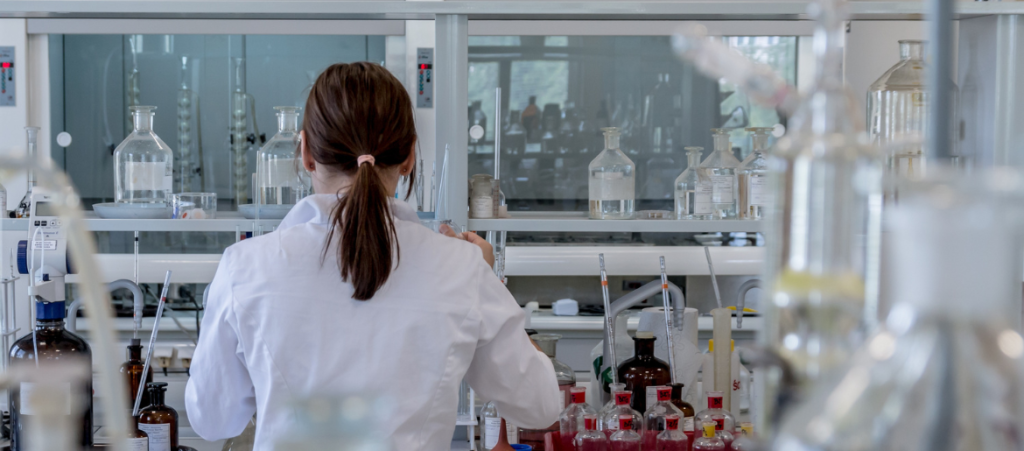
One million Australians with endometriosis are still waiting for a cure to the debilitating illness, but there has been some progress made. Despite affecting one in seven women around the world, endometriosis has not received the attention and resources it deserves, leaving many women to suffer in silence. However, there is a growing focus on the disease, with some recent research discoveries shedding light on this debilitating condition (and no, we’re not talking about this incredibly dismissive, insulting and irrelevant study rating the attractiveness of women with endometriosis).
These are some of the more promising endometriosis research projects looking for a solution for people living in pain. It’s a short list – one that ultimately highlights the urgent need for increased funding and a shift in how we prioritize women’s health.
- Understanding Endometriosis
Researchers from Sydney’s Royal Hospital for Women have made significant strides in advancing our understanding of endometriosis. Their groundbreaking work involved growing tissue from every known type of endometriosis, allowing them to observe changes and compare how these tissues respond to different treatments. This comprehensive approach has provided valuable insights into the complexities of endometriosis, which can pave the way for more targeted and effective treatments in the future, including preserving fertility. Professor of Obstetrics and Gynaecology Jason Abbott said: “By knowing the type of endometriosis, we will be able to predict whether a patient is likely to experience an aggressive, invasive form of the disease and offer treatment to preserve her fertility.” - Links To Inflammatory Diseases
Beyond the physical manifestations of endometriosis, recent research has uncovered compelling connections between this condition and various other health concerns. This study found endometriosis may be linked to 11 different conditions, including migraine, back and multisite chronic pain (MCP), as well as inflammatory conditions such as asthma and osteoarthritis. These findings emphasize the far-reaching impact of endometriosis, highlighting the need for a holistic approach to understanding and addressing the complexities of this condition. It also helps the diagnosis process, which is currently estimated to take an average of six years. Connecting endometriosis to these other conditions increases the likelihood that a doctor will consider endometriosis, even if you have symptoms that fall outside ‘normal diagnostic criteria’.
- TGA Approved Daily Treatment
When it comes to treating endometriosis, patients often have to try a long list of methods to alleviate pain. From experimenting with pain-relief medication, hormone therapy, surgery, combined treatments, acupuncture, cannabis, Low FOD-MAP diets… you name it, an endo patient has probably tried it. For the first time there is now a single daily oral tablet that shows promise for pain relief, with the Therapeutic Goods Association recently approving Ryeqo, the first new endometriosis treatment in 13 years. The medication, from pharmaceutical company, Gedeon Richter, works by targeting specific receptors in the body involved in the development of endometriosis-related symptoms, such as pelvic pain and inflammation. By modulating these receptors, Ryeqo aims to alleviate the chronic pain and discomfort experienced by individuals with endometriosis. The medication also aims to prevent excess tissue growth. The drug is not currently subsidised by the Pharmaceutical Benefits Scheme (PBS), meaning a prescription will cost patients around $135 for a one-month supply. However, Gedeon Richter announced they have applied to the Pharmaceutical Benefits Advisory Committee (PBAC) to include the medication on the PBS list, which will aim to make it more affordable for patients.
Although these advancements are exciting for the endometriosis community, there is still a long way to go. The Australian Government has committed $87.2 million in endometriosis-specific funding, since the release of the National Action Plan for Endometriosis in July 2018, with $29 million being directed to research. That’s a drop in the ocean, considering endo is estimated to cost the Australian economy $9.7 billion a year. Unfortunately, it’s not much better around the world. A 2022 report found that “while fewer than 700,00 people have Crohn’s disease in the U.S., Crohn’s disease research received $90 million in funding, or $130.07 per patient.” At the time there were an estimated 6.5 million people with endometriosis in the U.S., funding from the government was only $16 million – by our calculations, that’s a measly $2.50 per patient.
When will it be enough for endometriosis patients to be prioritised in public health? The struggle for recognition and adequate support can feel like an endless battle, but we must continue to fight for change. The progress in research absolutely is a shift in the right direction, but there is still a long way to go. We must persist in our efforts to raise awareness, demand equitable funding for relevant research, and advocate for improved access to specialised care. Every voice, every story, and every plea for understanding brings us one step closer to a future where endometriosis patients are truly prioritised in public health. The fight may be ongoing, but our determination and resilience will be the driving force behind the change we seek – a life without constant pain.
Smart people read more:
The Psychological Toll of Endometriosis Can Really F*ck You Up
What is Ryeqo, the recently approved medicine for endometriosis? – The Conversation
Why are doctors still telling women with endometriosis to become pregnant? – Sydney Morning Herald


Comments are closed.